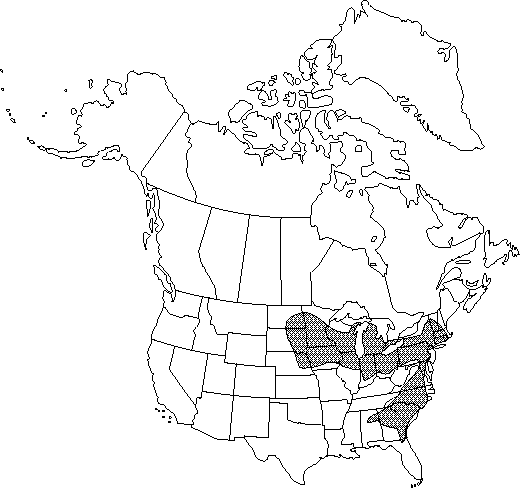Pilea fontana
Brittonia 1: 87. 1931.
Herbs, annual, 1-7 dm. Stems simple or slightly branched, erect. Leaf-blades elliptic to ovate, paired blades equal, 1-10 × 0.6-4.5 cm, margins dentate. Inflorescences crowded or lax. Flowers ca. 1 mm across. Achenes uniformly black except for very narrow, pale, often inconspicuous, marginal band, compressed, teardrop-shaped, 1.3-1.7 × 1-1.5 mm, conspicuously pebbled or warty with raised bosses.
Phenology: Flowering late summer–fall.
Habitat: Mixed woods, along streams, swamps, seepages, and marshes
Elevation: 0-300 m
Distribution

Ont., Ala., Conn., Fla., Ga., Ill., Ind., Iowa, Md., Mass., Mich., Minn., Nebr., N.J., N.Y., N.C., N.Dak., Ohio, Pa., R.I., S.C., S.Dak., Vt., Va., Wis.
Discussion
Pilea fontana and P. pumila are separated primarily by differences in their mature achenes. In addition, leaves of P. fontana are often more opaque and less shiny than those of P. pumila. A few collections of P. pumila from Bourbon, Owen, and Robertson counties, Kentucky, and Macon County, Tennessee, have the black achenes of P. fontana, but without the bosses, and show striations on the younger achenes as in P. pumila. I have seen only two mixed collections (Chisago County, Minnesota, and Richland-Ransom county line, South Dakota), which probably indicates that these two very similar species seldom occur together, even though their ranges overlap completely.
Selected References
None.